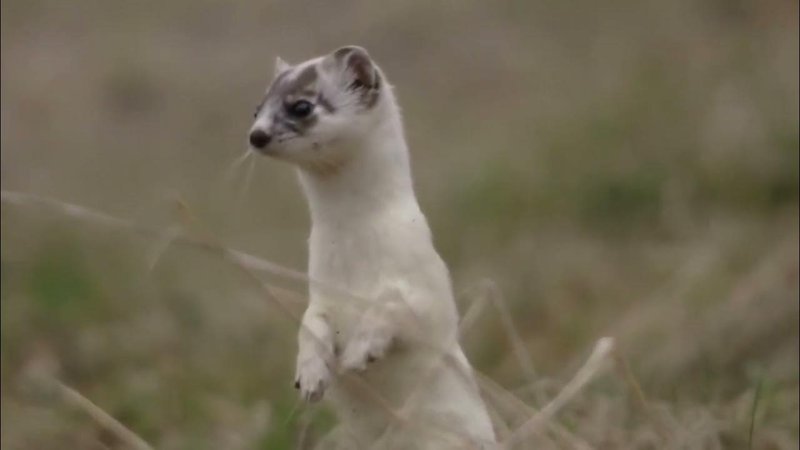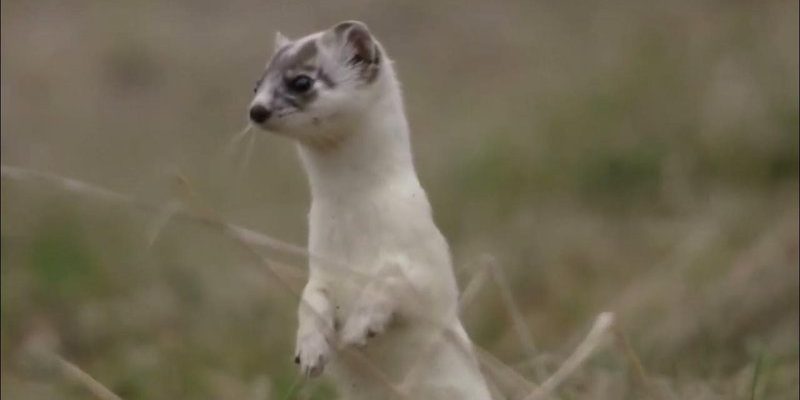
Understanding the stoat starts with appreciating its role in the ecosystem. Often mistaken for weasels, stoats are small, slender carnivores with a knack for survival. They’re found across Europe, Asia, and North America, thriving in various habitats, from woodlands to fields. So, what do these agile hunters eat, and how do they catch their meals? Let’s break it down in a way that’s easy to digest.
What Do Stoats Eat?
Stoats have quite a diverse diet, which is one of the keys to their survival. They are primarily carnivorous, meaning they feast on meat. But what exactly is on the menu for these crafty hunters?
Typical diet:
- Rabbits
- Rodents, such as voles and mice
- Birds and their eggs
- Insects and small reptiles
Rabbits are a favorite, especially during the spring when they’re plentiful. Stoats will often hunt them in pairs, using teamwork to take down their prey. On the other hand, during winter, when food is scarce, stoats adapt by targeting smaller animals like rodents. This adaptability is crucial for their survival, especially in harsher climates.
You might be wondering how they manage to hunt animals much larger than themselves. Here’s the thing: stoats are built for hunting. With their powerful back legs and sharp claws, they can quickly chase down smaller creatures. Plus, their keen sense of smell and hearing helps them track down prey even in thick brush or dense grass.
Hunting Strategy: The Element of Surprise
When it comes to hunting, stoats are the epitome of stealth. They rely heavily on surprise to catch their dinner. Imagine you’re a little rabbit, munching on some grass, completely unaware that a stoat is slinking through the grass nearby.
Key tactics include:
- Stalking quietly
- Using their environment for cover
- Quick, agile movements
Stoats often take advantage of their fur color, which changes with the seasons. In winter, they’re snowy white, allowing them to blend in with the snow. During summer, they sport a rich brown coat, making them invisible among the grasses and soil. This camouflage is crucial for sneaking up on their prey.
Once they’re close enough, stoats can spring into action. They’ll launch themselves at their target, often using a pounce to tackle it to the ground. It’s a dramatic moment, much like a scene from an action movie, and every second counts in the wild.
The Role of Persistence in Hunting
Patience is another trait that stoats masterfully embody. They don’t just rush in; they often wait for the perfect moment to strike. Here’s where their persistence shines through—stoats might watch a group of rabbits for several minutes, learning their patterns before making a move.
They use various hunting techniques depending on the prey. For instance, when hunting birds, stoats may take a more cautious approach. They’ll sneak along the ground, looking for an opening to dart upwards and catch a bird mid-flight. It’s a testament to their versatility as hunters.
You could say that for stoats, hunting is all about timing. They’ve developed instincts that help them know when to be still and when to strike. This combination of stealth, patience, and strategy is part of what makes them such efficient hunters in their natural habitat.
Adaptation and Overcoming Challenges
Stoats face numerous challenges in the wild, from environmental changes to competition with other predators. Their ability to adapt their hunting strategies is vital for their survival. For example, during harsh winters, food becomes scarce, and stoats may travel longer distances to find meals.
When it comes to hunting larger prey like rabbits, stoats often face competition from bigger predators such as foxes or hawks. In these cases, they must rely on their speed and agility to outmaneuver competitors. They can dart into small burrows or dense brush, escaping larger rivals that may not fit.
Here’s an interesting fact: when stoats find themselves in a tight spot, they can even perform a little dance known as the “stoat dance.” This involves a series of quick movements that seem playful but serve to confuse potential threats. It’s a remarkable display of adaptability that allows them to escape danger while still on the hunt.
The Importance of Hunting Skills for Stoat Survival
You might be wondering why stoats’ hunting skills are so crucial beyond just finding their next meal. Well, successful hunting contributes to the entire ecosystem. By controlling the populations of smaller animals, stoats help maintain a balance in their habitat.
Their presence as predators means they indirectly support vegetation by limiting the number of herbivores, like rabbits, which can overgraze. This balance is essential, as it allows various plant and animal species to thrive within the same ecosystem.
Moreover, being a skilled hunter helps stoats establish their territory and attract mates during the breeding season. Males, in particular, will often demonstrate their hunting prowess to impress potential partners. A stoat that can hunt well is seen as a strong candidate for reproduction, ensuring that these skills are passed onto the next generation.
Why Understanding Stoats Matters
So, why should we care about stoats and their hunting strategies? Understanding them gives us a glimpse into the intricate web of life in nature. Each creature plays a role, and stoats are no exception. They’re a reminder of the wonders of wildlife and the importance of every species in maintaining ecological balance.
Plus, they offer valuable lessons in adaptability and resourcefulness. In our own lives, we face challenges and must adapt to changing circumstances. Just like stoats, we can learn to embrace change and develop strategies to overcome obstacles.
Recognizing the role of stoats in our ecosystems can also foster a deeper appreciation for wildlife conservation. By protecting their habitats, we ensure that future generations will continue to enjoy the beauty and complexity of nature.
Exploring the diet and hunting strategies of the stoat reveals so much about these small, yet remarkable creatures. From their diverse diet and stealthy hunting techniques to their adaptability and role in the ecosystem, stoats exemplify the beauty of nature’s design.
Next time you catch a glimpse of one of these furry hunters darting past, take a moment to appreciate the incredible skills they possess. Their instinctive behaviors not only help them survive but also contribute to the health of their environment. In a world filled with complexity, stoats remind us that even the smallest creatures have a significant impact on the balance of life.

